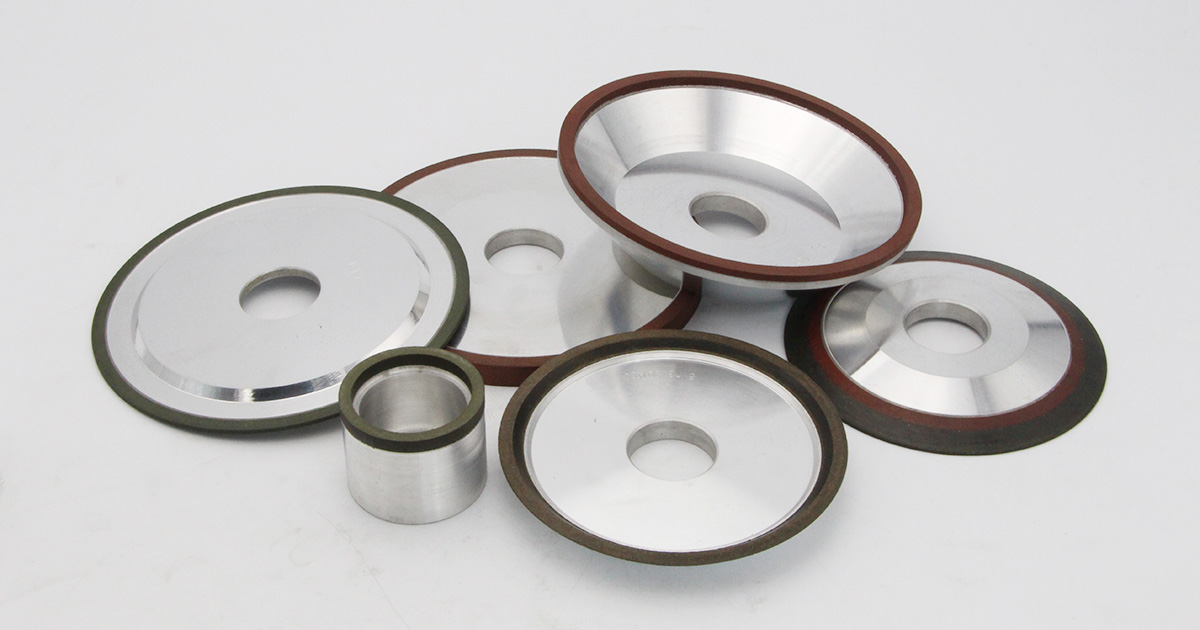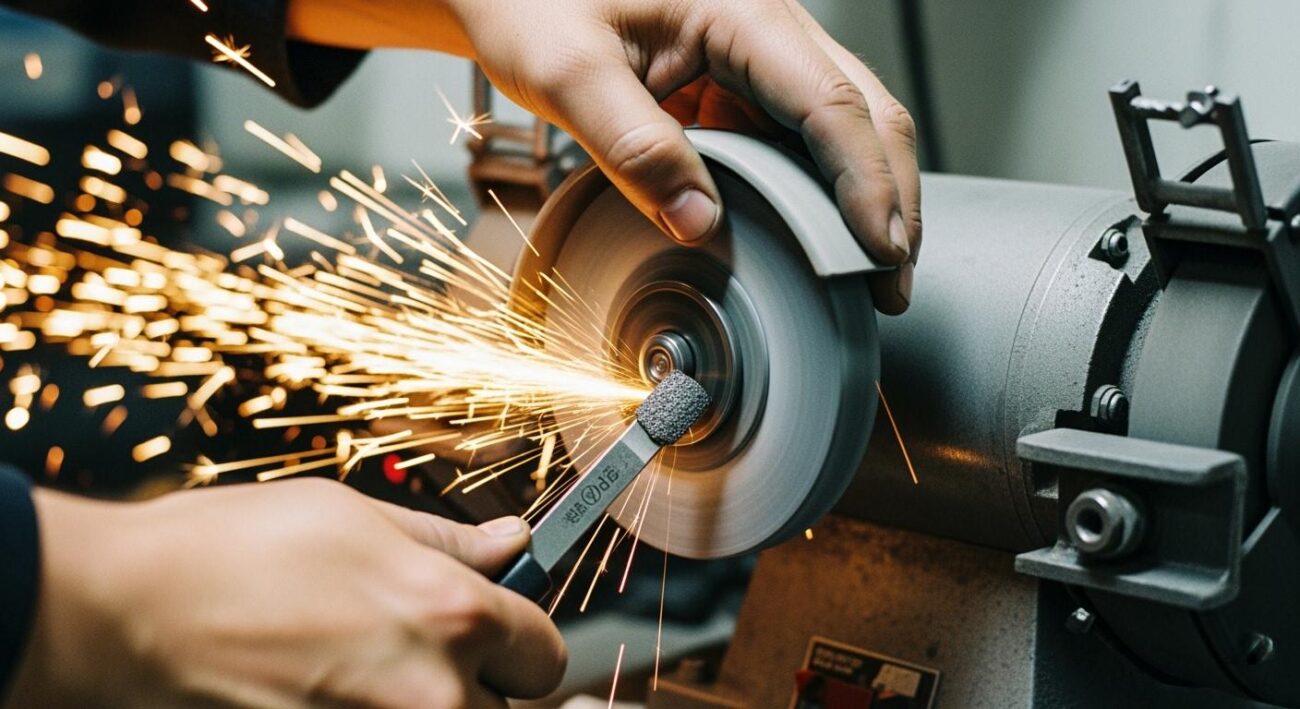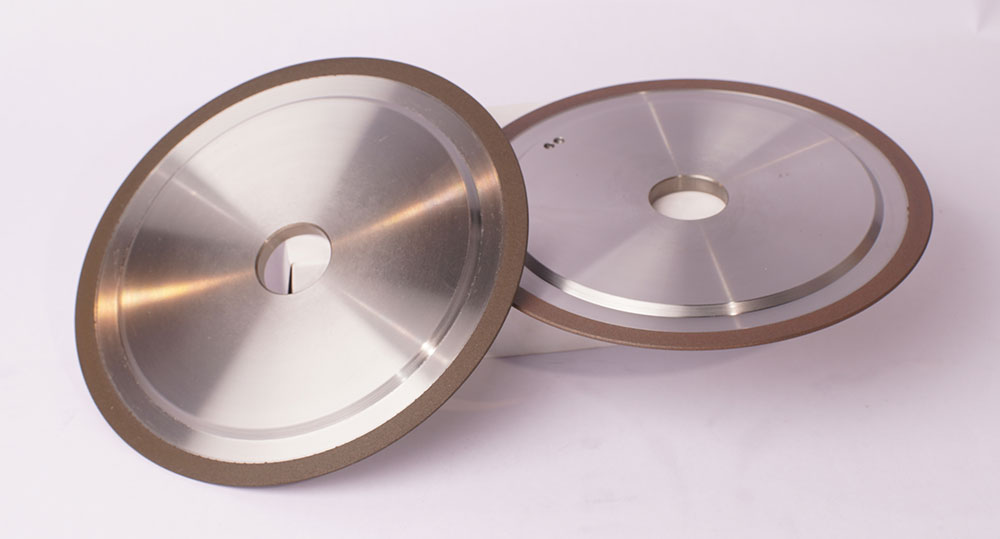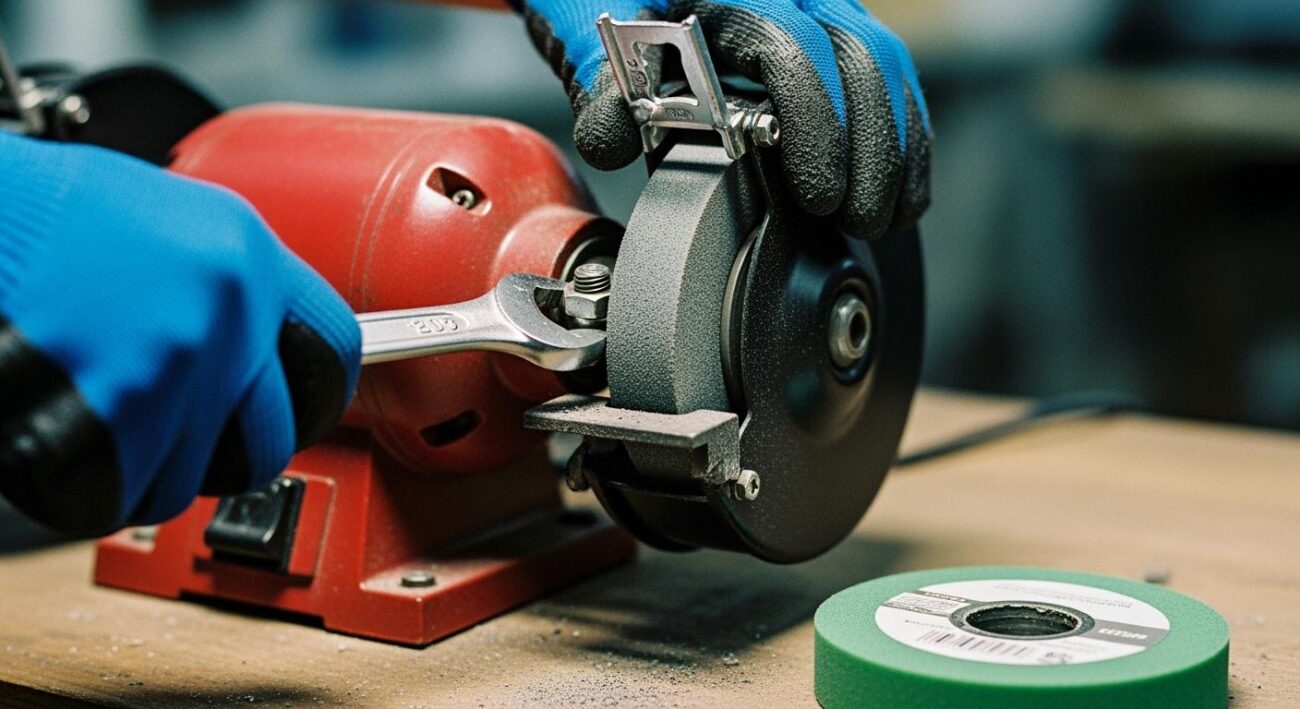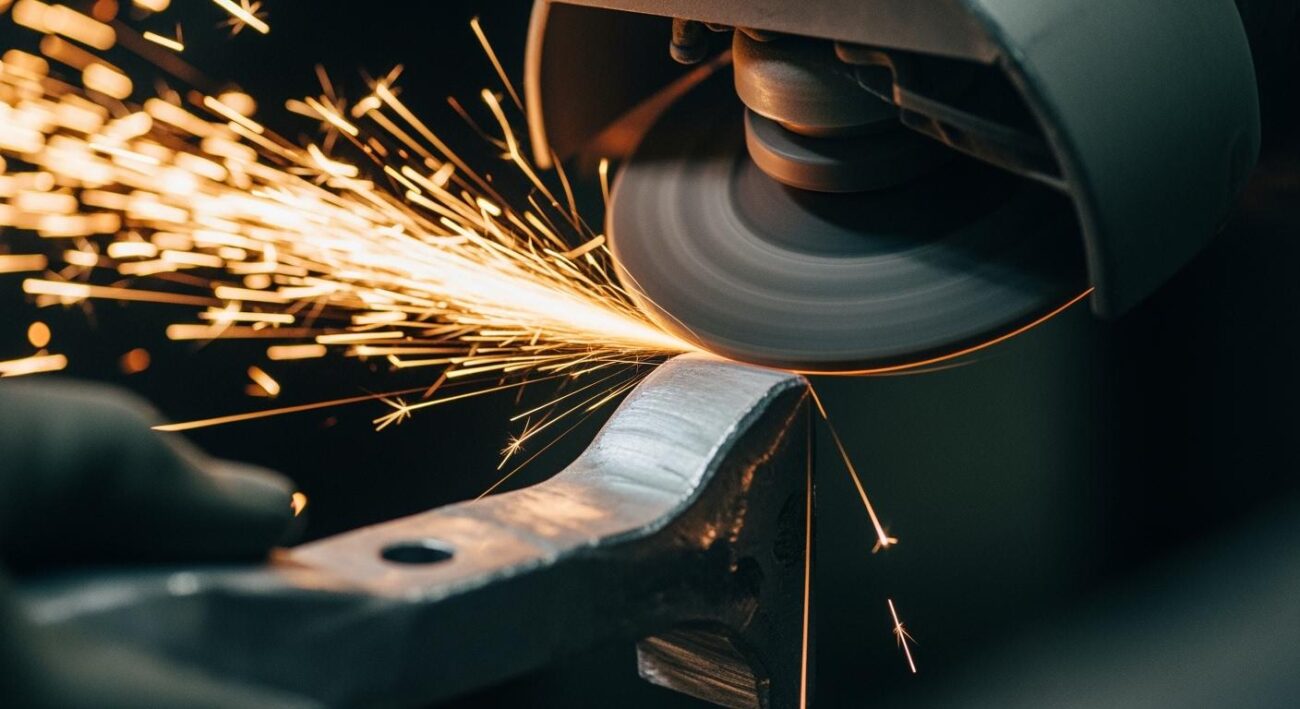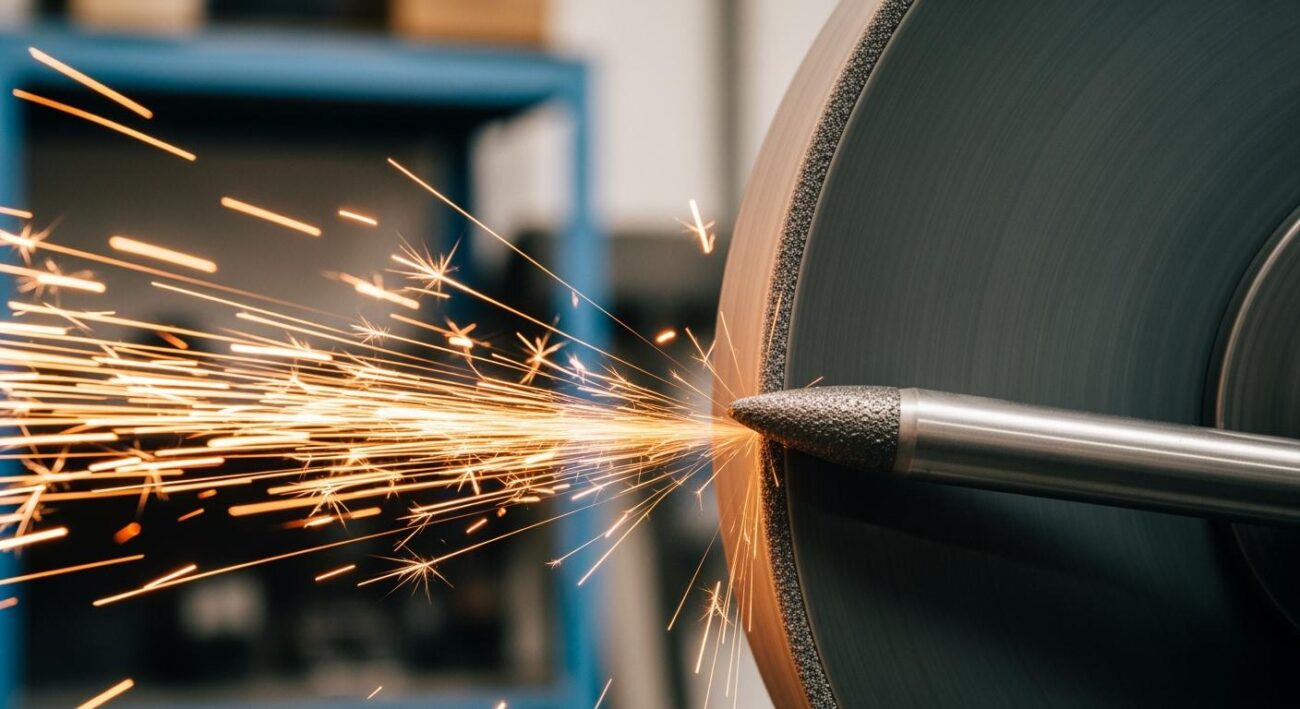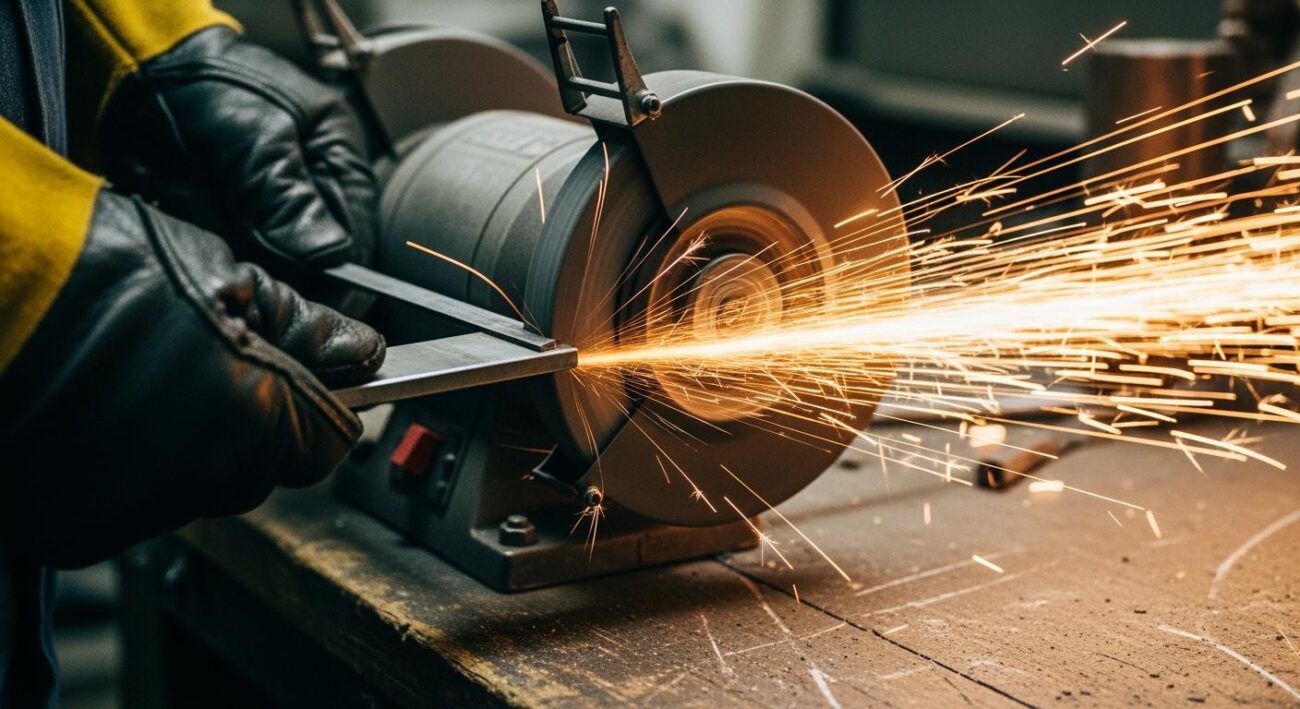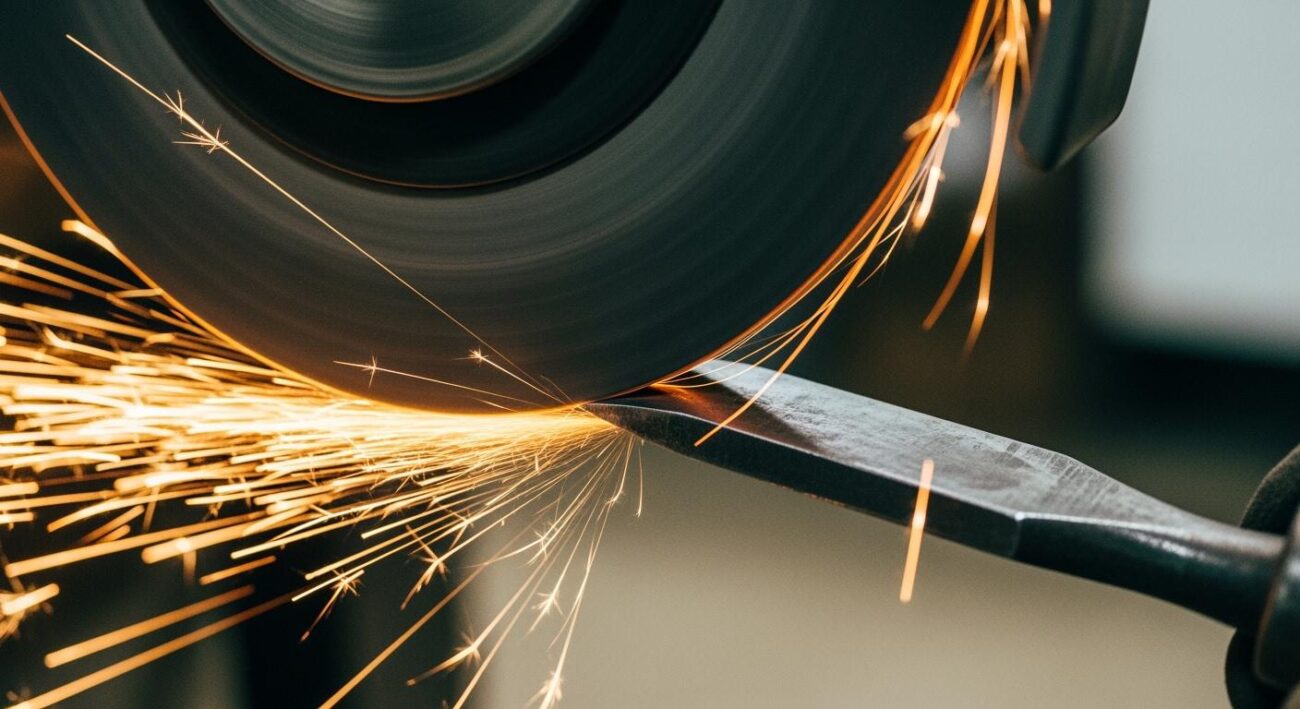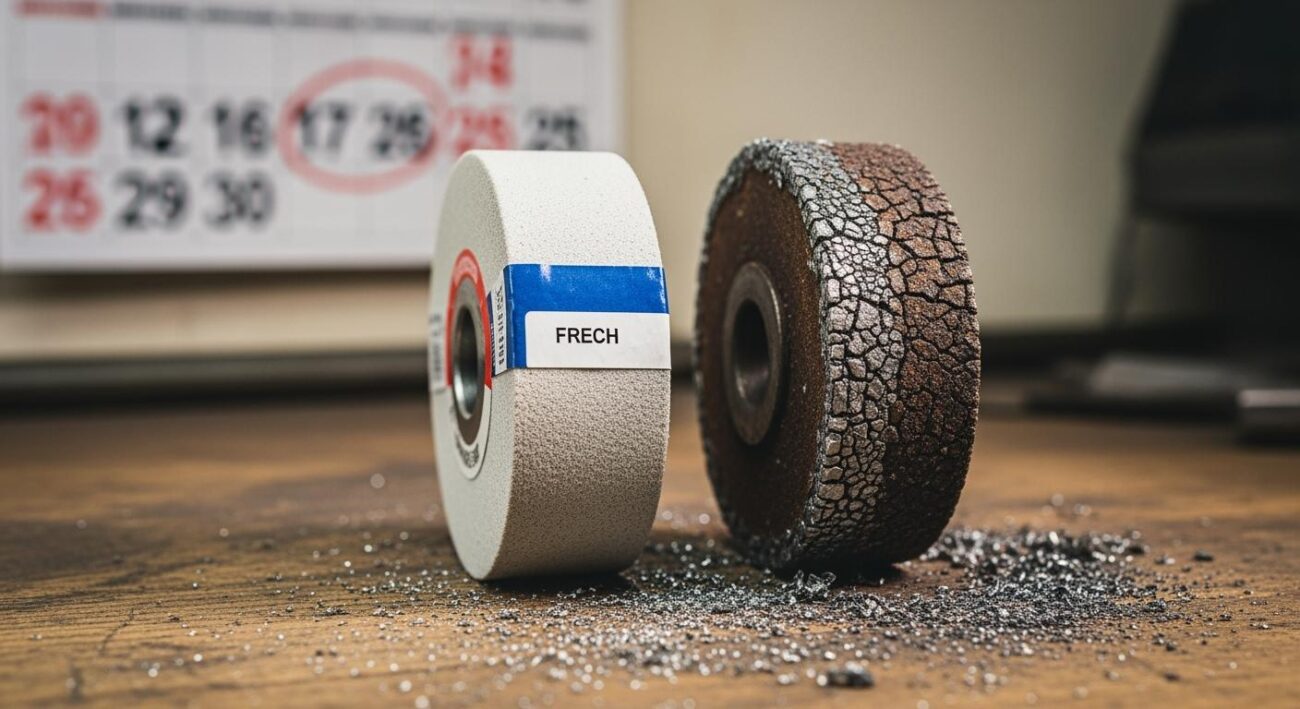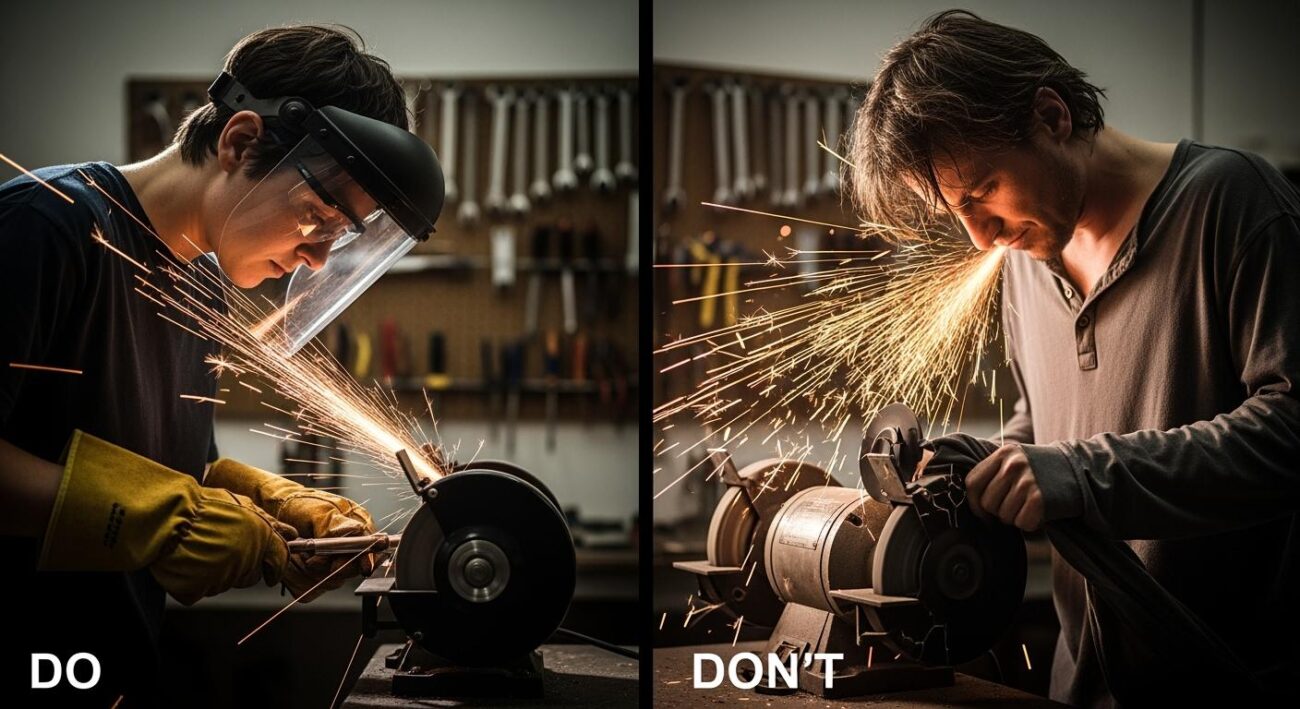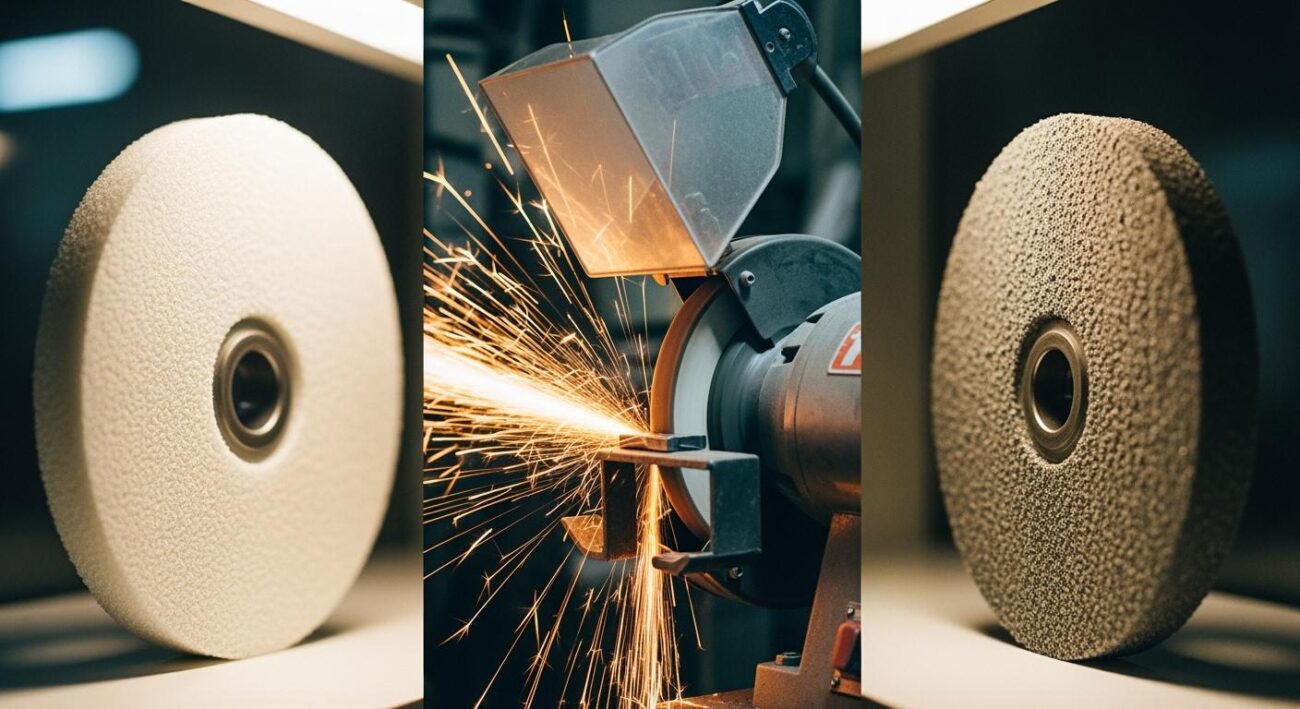You must know the materials unsuitable for grinding wheels. A standard grinding wheel is not for every job. You should avoid grinding these specific materials:
- Soft non-ferrous metals (aluminum, brass)
- Wood and fibrous materials
- Soft plastics
- Glass
Warning: Grinding these materials can damage your wheels, cause serious injury, and produce poor results. Understanding these reasons for incompatibility is crucial for your safety.
Key Takeaways
- Avoid grinding soft metals like aluminum and brass. They clog the wheel and make it unsafe.
- Do not grind soft plastics or rubber. They melt, gum up the wheel, and release harmful fumes.
- Never use a grinding wheel on wood. It can burn, splinter, and cause fires.
- Use special grinding wheels for brittle materials like glass or hardened steel. Standard wheels can cause them to shatter or weaken.
- Always match the grinding wheel to the material. This keeps you safe and protects your tools and work.
Key materials unsuitable for a standard grinding wheel
You now know which materials to avoid. Let’s explore why these specific materials pose a risk to you and your equipment. Understanding the “why” helps you make safer choices in the workshop.
Soft metals: Aluminum, copper, and brass
You might think a standard grinding wheel can handle any metal, but soft metals are a major exception. Materials like aluminum, copper, and brass cause a problem called “loading.”
When you attempt the grinding of these soft metals, the material does not chip away cleanly. Instead, it melts slightly and gets smeared into the abrasive surface of the wheel. This clogging action quickly fills the gaps between the abrasive grains. A loaded wheel loses its cutting ability and generates extreme friction and heat. This not only ruins your workpiece but also makes the grinding process ineffective. You need specialized wheels with a softer bond and a more open structure for these materials to prevent clogging.
Soft non-metals: Plastics and rubber
Grinding soft non-metals like plastics and rubber presents a different set of challenges. The heat from the grinding friction doesn’t cut these materials; it melts them. The melted plastic or rubber gums up the wheel’s surface, rendering it useless almost immediately.
More importantly, this process releases hazardous fumes. You must protect yourself from this invisible danger.
Health Alert: Toxic Fumes from Plastics Melting certain plastics releases dangerous chemicals. For example:
- PVC can release hydrogen chloride, dioxins, and benzene.
- ABS can release styrene, benzene, and phenol, which can harm your liver and kidneys.
Always work in a well-ventilated area and use appropriate respiratory protection when working with these materials.
Wood and other fibrous materials
Wood is another material you should never take to a bench grinder. A grinding wheel is designed to abrade hard materials, not cut fibrous ones. When you press wood against fast-spinning wheels, it doesn’t grind away neatly. It will burn, char, and splinter.
The biggest risk here is fire. The combination of fine wood dust (a fuel source) and sparks from the grinder (a heat source) is extremely dangerous.
Workshops have strict fire safety rules for a reason. Any flammable material, including wood dust and debris, must be kept far away from heat sources. After a grinding session, you should always clean the machine and surrounding area to remove any potential fuel. Staying with the machine for at least 30 minutes after shutdown helps you monitor for any signs of smoldering or fire.
The danger of cross-contamination
Using the same wheels for different types of materials creates a serious risk of cross-contamination. Particles from one material become embedded in the abrasive surface and can be transferred to the next workpiece you grind. This can cause hidden damage that appears much later.
For instance, if you grind carbon steel and then use the same wheel on stainless steel, you transfer iron particles. These particles will later rust when exposed to moisture, ruining the corrosion-resistant properties of the stainless steel. Similarly, contaminating an aluminum workpiece can lead to weld failures or cracks that show up weeks or months later, causing costly and catastrophic failures. Proper grinding requires dedicated wheels for different materials to ensure quality and safety.
Grinding soft metals: Clogging and safety risks
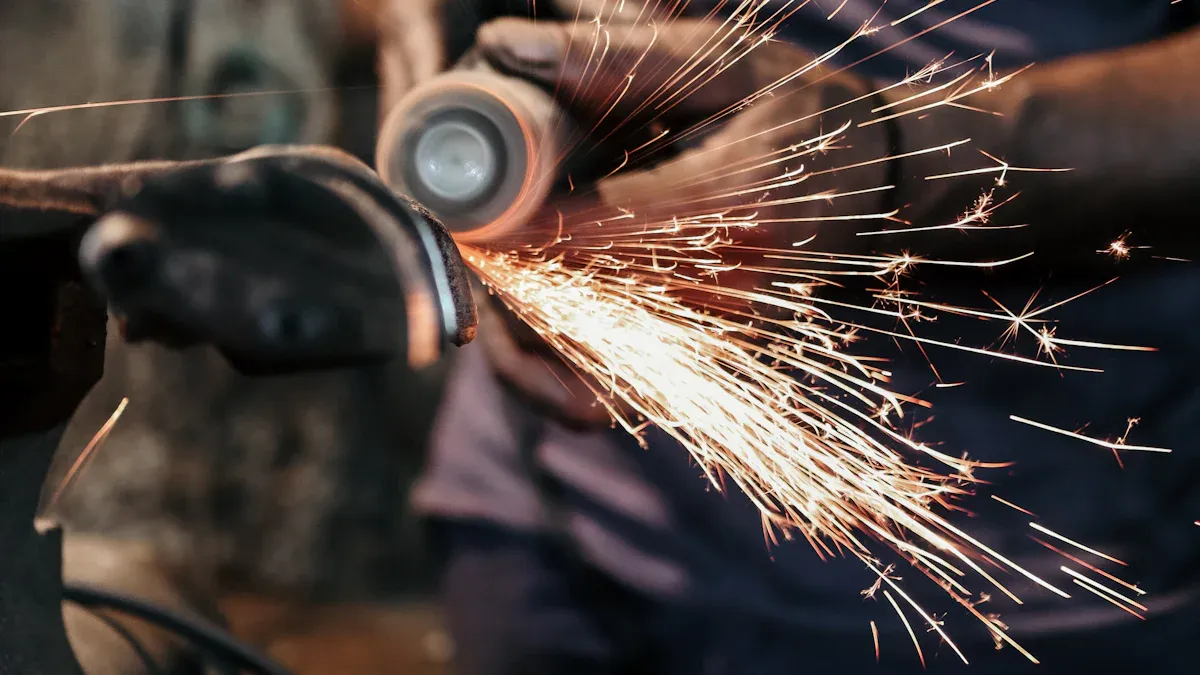
You already know soft metals are unsuitable for a standard grinding wheel. Now, let’s explore the specific dangers. Understanding these risks helps you protect your tools and yourself during any grinding project.
How soft metals load the wheel
Soft metal materials like aluminum create a problem called “loading.” The heat from grinding melts these materials. The melted metal then gets smeared into the abrasive surface of the wheel. This clogs the gaps between the abrasive grains. A loaded wheel stops cutting effectively. Instead, it creates more friction and heat. This ruins your workpiece and makes the entire grinding process inefficient. You must use specialized wheels for these materials to avoid this issue.
The risk of an unbalanced wheel
A loaded wheel quickly becomes an unbalanced wheel. The clogged metal adds uneven weight, causing dangerous vibrations. An unbalanced wheel can shatter at high speed, sending sharp fragments flying. You must always inspect your wheels for damage.
Safety Tip: The Ring Test 🔔 You can check for hidden cracks in new or used wheels with a simple “ring test” based on OSHA standards:
- Make sure the wheel is dry and clean.
- Suspend the wheel on your finger or a small pin.
- Gently tap it with a light, non-metallic object (like a screwdriver handle).
A clear ring means the wheel is safe. A dull thud suggests a crack, and you must discard the wheel immediately. This simple check is crucial for safe grinding.
Overheating and reduced effectiveness
A clogged wheel generates extreme heat. This heat does more than just melt soft materials; it can damage hard ones, too. Overheating steel causes its internal structure to change. You might see a blue or purple discoloration on the surface. This color change signals a loss of strength and toughness. The metal’s grains grow larger, making the material more brittle and likely to crack under stress. This damage compromises the quality of your workpiece. Proper grinding avoids overheating to protect the integrity of your materials.
Issues with grinding soft non-metal materials
You must handle soft non-metal materials like plastics and rubber with special care. A standard grinding wheel is not the right tool for these jobs. The friction from grinding creates unique problems that are both messy and dangerous. Understanding these issues helps you avoid damaging your tools and harming your health.
Melting instead of abrading
The primary issue with grinding plastics is heat. The intense friction of the grinding process generates high temperatures very quickly. These heat-sensitive materials do not chip away like metal. Instead, they melt. You are not actually grinding the material; you are melting it onto your tool.
Different plastics melt at various temperatures. You can see how easily a grinding wheel’s heat can affect common materials.
| Plastic Type | Melting Point Range (°C) |
|---|---|
| Acrylic/PMMA | 220-250 |
| HDPE (High-Density Polyethylene) | 210-270 |
| LDPE (Low-Density Polyethylene) | 180-240 |

This melting action makes effective grinding impossible and creates further problems for your equipment.
Gumming up the wheel surface
When you attempt the grinding of soft materials, the melted plastic or rubber quickly coats the abrasive surface. This sticky residue fills the pores of the grinding wheels, a problem known as “gumming.” A gummed-up wheel loses its ability to cut. It essentially becomes a smooth, ineffective disc.
This buildup also causes the wheels to run out of balance, creating dangerous vibrations. Continuing to use a gummed-up wheel will only generate more heat, worsening the problem and potentially damaging the grinder’s motor. You must stop the grinding immediately if you see materials smearing onto the wheel.
Hazardous fumes and fire risks
Melting plastic and rubber releases toxic fumes into your workspace. You cannot always see or smell these dangerous chemicals, but they pose a serious health risk.
Health & Safety Alert ☣️
Inhaling fumes from heated plastics can cause respiratory irritation and long-term health problems. You should always ensure your work area has proper ventilation. Using a respirator designed for organic vapors is essential when working with these materials.
Besides toxic fumes, the grinding of these materials also creates a fire hazard. The combination of fine, flammable dust and the sparks from the grinder motor can easily start a fire. Your safety depends on keeping flammable materials away from your grinding station.
Grinding brittle and hard materials
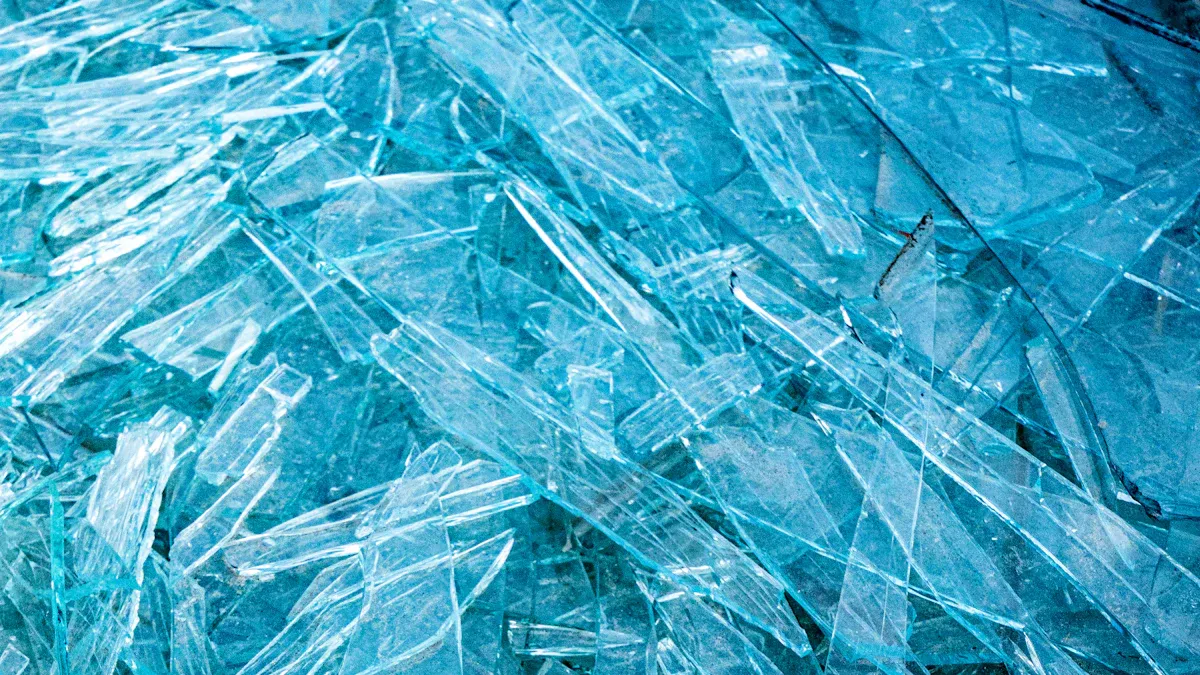
You might think a powerful grinder can tackle anything, but some of the hardest materials are also the most delicate. Standard grinding wheels are not designed for brittle materials like glass, ceramics, or specially hardened steels. Using the wrong wheel on these materials can lead to shattered workpieces and dangerous failures.
Why glass and ceramics shatter
Glass and ceramics are extremely brittle. A standard grinding wheel applies too much force and localized heat. Instead of abrading away smoothly, these brittle materials develop micro-cracks under the stress. These cracks spread instantly, causing the workpiece to shatter. You are not grinding the material; you are breaking it. This process is unpredictable and can send sharp fragments flying, creating a serious safety hazard.
Damaging tempered or hardened steel
You can also damage hardened steel tools with the wrong grinding technique. Excessive heat from friction can ruin the steel’s temper, which is the hardness and toughness created by heat treatment. When you overheat the metal, you will see a blue or purple discoloration on the surface. This color change signals that the steel’s internal structure has weakened, making it soft and brittle. While High-Speed Steel (HSS) is very resistant to heat, carbon steel loses its temper at much lower temperatures. Proper grinding protects the integrity of your tools.
The solution: Aimgrind super hard abrasives
You need specialized wheels for grinding hard and brittle materials safely and effectively. Standard aluminum oxide wheels are simply not up to the task. The professional solution involves using abrasives engineered for these specific challenges.
The Right Tool for a Tough Job ⚙️ For these demanding jobs, you should turn to Aimgrind’s super hard abrasives. These advanced wheels use diamond or Cubic Boron Nitride (CBN) and are designed for precision.
- Diamond wheels are perfect for non-ferrous brittle materials like ceramics, glass, and carbide.
- CBN wheels excel at grinding hard ferrous metals like tool steels and cast iron without causing heat damage.
Using the correct Aimgrind wheel turns an impossible grinding task into a manageable one, ensuring both safety and a high-quality finish.
You now know which materials to avoid with a standard grinding wheel. Remember to keep soft metals, plastics, wood, and brittle materials away from your grinder. The most important safety rule for any grinding job is to match your material to the correct wheels. Proper grinding protects you and your equipment. For challenging materials, you can achieve professional results safely by using specialized solutions. This ensures every project is a success.
FAQ
What if I grind aluminum for just a second?
You should never grind aluminum, even briefly. The metal instantly melts and clogs the wheel’s pores. This “loading” creates an unbalanced and dangerous tool. It also ruins the wheel for any future steel grinding jobs.
Can I use a wire wheel for soft materials?
You use a wire wheel for cleaning, not for shaping or grinding. It works well for removing rust and paint from hard surfaces. It will not grind soft metals or wood effectively and can dangerously throw debris.
How do I clean a clogged grinding wheel?
You can use a special tool called a grinding wheel dresser to clean minor buildup.
Safety First! ⚠️
For wheels badly clogged with soft metal, you should replace them. A heavily loaded wheel is a serious safety risk and is often beyond repair.
Why are CBN wheels better for hardened steel?
You need CBN (Cubic Boron Nitride) wheels for hard steel. They grind coolly and efficiently without creating excess heat. This protects the steel’s temper and strength. A standard wheel generates too much heat and will soften your hardened tool.
Contact Us
For More Grinding Solution or Customized Abrasive Tools

